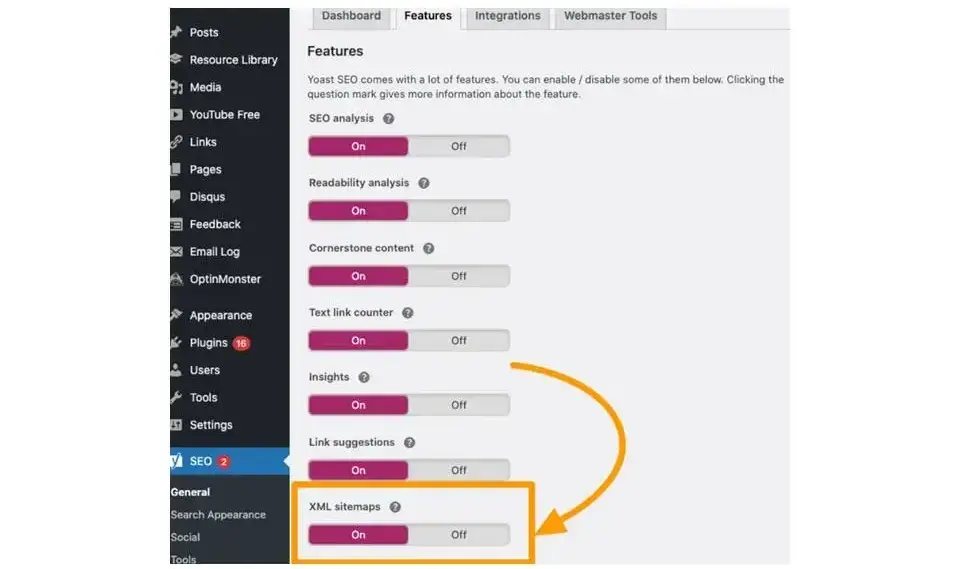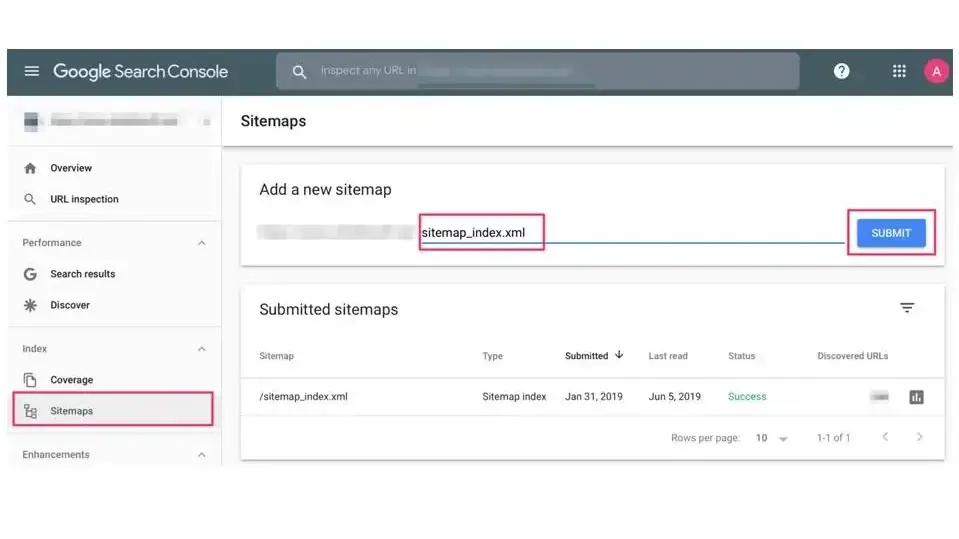Running a website involves many tasks, and creating a sitemap is an especially important cog in the wheel.
This article explains why sitemaps are valuable, how to create one, and what steps to take after making it.
What Is a Sitemap?
A sitemap is a file that lists all the pages, images, videos, and files on your website, showing how they're connected.
The sitemap is essentially a guide for search engines to index and explore your site's content easily. It also tells search engines which pages are most important.
Types of Sitemap

Normal XML sitemap: The most common sitemap is the XML sitemap, which links to different pages on your site in an XML format.
Image sitemap: An image sitemap helps Google find the images that are hosted on your website.
News sitemap: A news sitemap aids Google in finding content on sites that are approved for Google News.
Video sitemap: A video sitemap is used to help Google understand the video content on your site.
Benefits of Having a Sitemap for Your Website
A well-planned sitemap can greatly contribute to a website's success by improving how search engines find your pages and enhancing user experience..
Benefits of a sitemap include:
SEO Enhancement: Sitemaps are key for SEO by helping search engines navigate and recognize your site, especially for complex site structures. Updating your sitemap boosts search engine communication and optimization.
Planning Tool: Use a sitemap to plan your website layout before building it, making the design process smoother and clearer for how pages are organized and the total page count.
Content Prioritization: Sitemaps allow for categorizing web pages, ensuring high-priority content is indexed and crawled first.
Visitor Insights: Analyzing sitemap reports uncovers errors to fix, keyword usage, and traffic sources, aiding in attracting more traffic and refining content.
Cost-free: Submitting your sitemap to Google is completely free, adding value without any cost.
Common Ways to Create a Sitemap
Manual Creation: Customize your sitemap whichever way you want, but it's complex and best suited for experienced developers.
Online Sitemap Generators: These platform-agnostic tools offer simplicity and speed in creating a sitemap without the need for additional installations. Try mysitemapgenerator for simplicity.
CMS Plugins: These platform-agnostic tools offer simplicity and speed in creating a sitemap without the need for additional installations.
How to Create a Sitemap
There are plenty of tools that can help you create a Sitemap easily. Let’s quickly review how to create a sitemap using WordPress plugins and sitemap generators
How to Create a Sitemap with WordPress Plugins
Yoast Plugin

- Download and activate the Yoast plugin.
- Access the XML sitemaps options under the SEO tab in your WordPress dashboard.
- Ensure that the setting is turned on to generate XML sitemaps.
All in One SEO Plugin

- Install and activate the All in One SEO plugin.
- Navigate to the Sitemaps section under All in One SEO in your WordPress menu.
- Verify that the Enable Sitemaps button is toggled on for automatic sitemap creation.
How to Create a Sitemap with XML-Sitemaps Generator

- Visit XML-sitemaps.com and enter your site's main URL.
- Click the "Start" button and wait for the generator to crawl your site.
- Download your XML sitemap file and upload it to the root directory of your site.
Steps to Take After Creating Your Sitemap
Once you are done creating your Sitemap, the next step is to submit it to search engines like Google and Bing. Here's how:
Submit Sitemap to Google

- Find your sitemap page on your live site.
- Go to Google Search Console and select your domain
- Click on "Sitemaps" under "Index."
- Remove outdated sitemaps.
- Add your sitemap URL under "Add a new Sitemap"
- Click submit, and Google will verify it.
Submit Sitemap to Bing

Access the Bing Webmaster Tools dashboard and log in.
Click on "Sitemaps" in the left menu. In the input box, enter your sitemap URL, and click "Submit."
This simple process ensures your sitemap is indexed by Bing.
Advanced Sitemap Strategies for Large Websites
For large websites, optimizing sitemaps is vital to ensure search engines effectively crawl and index content. Let's explore advanced strategies to enhance sitemap management and boost site visibility.
Sitemap Indexing Optimization:
- Dynamic Generation: Use automated tools to create sitemaps based on website updates.
- Priority and Frequency: Assign tags to URLs to signal importance and freshness.
- XML Splitting: Divide sitemaps into smaller files for efficient crawling.
Enhancing Sitemap Coverage:
- Image and Video: Create separate sitemaps for media content.
- Hreflang Tags: Specify language and regional variations.
- Mobile Integration: Include mobile-specific URLs for comprehensive coverage.
Sitemap Auditing: Detecting and Fixing Errors
Let’s quickly review steps to effectively audit your website's sitemap to identify and resolve errors in order to ensure optimal search engine visibility and user experience.
Error Identification
Discover common sitemap errors such as broken links, incorrect URLs, and missing pages, using specialized tools like Google Search Console and XML Sitemap Validator.
Error Resolution
Take action to rectify identified errors by updating URLs, fixing redirects, and removing obsolete pages from your sitemap, ensuring accurate indexing and improved site navigation.
Regular Maintenance
Implement a routine schedule for sitemap audits and updates to proactively address any new errors or changes in site structure, maintaining search engine rankings and user satisfaction.
Final Remarks
Suppose your website has lots of pages, Google suggests breaking up your sitemap into smaller ones since each sitemap can only have up to 50k URLs.
Additionally, the URLs in your sitemap come with a last modified date. It's best to update these dates only when you've made significant changes or added new content to your site.
Google considers it spammy if you update dates on unchanged pages.
Frequently Asked Questions
Why should I create a website?
There are many reasons why you should create a website if you’re an artist. You can use it to create a place where people can learn about you, talk about your art, or show off your work.
How do I choose a design for my website?
One of the most important things when creating a website for your art is the design. Even though your pieces of art might be amazing, people will leave if your site is hard to navigate. This is why it’s important that the site is easy on the eyes and easy to navigate.
Is a website on WordPress safe?
Websites on WordPress are safe, however to avoid hacking keep your website up to date.
Are WordPress plugins free?
WordPress has loads of plugins you can install, some of them are free, but some of them you will need to pay for. You can learn how to use WordPress Plugins on our blog.
Should I include every page on my website in the sitemap, or are there exceptions?
You should generally include every page on your website in the sitemap, but there may be exceptions for pages you don't want search engines to index or pages with low priority.
Is it necessary to have a sitemap if my website is small or has only a few pages?
Yes, having a sitemap is still beneficial for small websites or those with few pages because it helps search engines index and crawl all available content efficiently.
How often should I update my website's sitemap?
You should update your website's sitemap whenever you add new pages or make significant changes to your site's structure or content.

I've been navigating the web hosting waters for years now. As the Chief Editor at Verpex, I team up with some awesome writers to dish out the good stuff on hosting. Got a Master's in Journalism, so I always have an eye out for quality. Whether you're just dipping your toes or you're a seasoned surfer, I'm here to make everything web hosting feel like a breeze
View all posts by Julia Lozanov



















